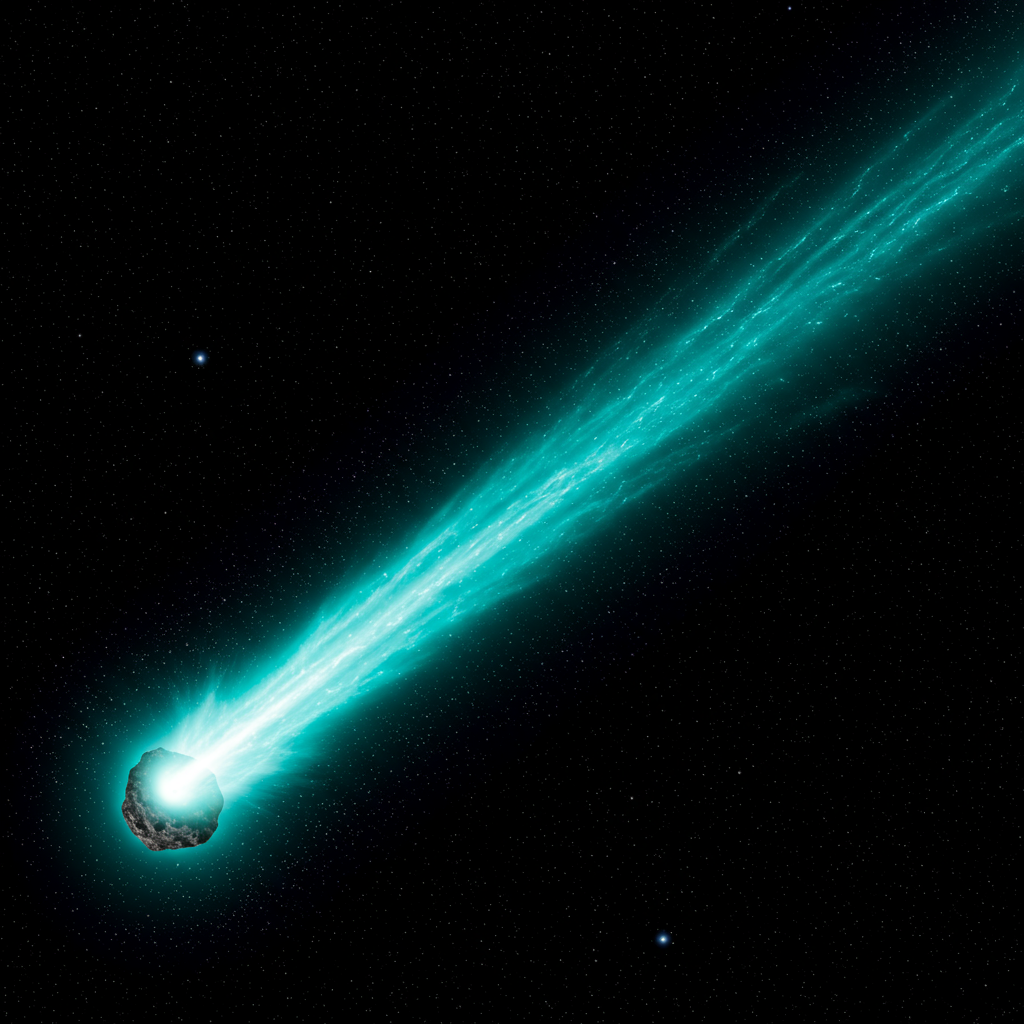A unique celestial journey designed to carry the ashes of loved ones into space tragically ended in the depths of the Pacific Ocean. A capsule containing the cremated remains of 166 people, along with a peculiar scientific payload of cannabis, crashed during its return to Earth after completing two orbits. This incident marks a significant setback for the companies involved and the families seeking a unique memorial for their loved ones.
The mission, known as “Mission Possible,” was a collaboration between Texas-based space burial company Celestis and German aerospace startup The Exploration Company (TEC). Launched aboard a SpaceX Falcon 9 rocket from Vandenberg Space Force Base on June 23, 2025, the Nyx capsule, developed by TEC, was intended to briefly carry its precious cargo into orbit before returning for recovery. This particular flight was Celestis’s first attempt at a memorial service designed to return from orbit, part of their “Earth Rise” offering.
The Ambitious Mission and Its Unexpected Cargo
The core purpose of this flight was twofold. For Celestis, it represented a pioneering step in memorial spaceflights, offering families a way to send a symbolic portion of their loved one’s remains on a brief but significant journey through space before planned recovery and return. Priced around $3,500, the “Earth Rise” service aimed to provide a sense of closure and connection to the cosmos.
However, the capsule wasn’t solely carrying human remains. It also held a distinct scientific payload: cannabis plant matter and seeds. This cargo was part of the “Martian Grow” project, a citizen science initiative with an ambitious goal – exploring the feasibility of cultivating cannabis on Mars. The project aimed to study how plants might fare in microgravity environments, gaining insights potentially relevant to future space agriculture. This unusual pairing highlighted the diverse and sometimes surprising payloads venturing into orbit today. The Nyx capsule carried approximately 300 kg (660 lbs) of total cargo, demonstrating its potential for varied missions.
From Orbit to Ocean: The Fatal Descent
Initial phases of “Mission Possible” proceeded smoothly. The Nyx capsule successfully launched, separated from the rocket, stabilized itself in orbit, and completed two orbits around Earth, powering the payloads as planned. Technical milestones, such as re-establishing communication after the re-entry blackout period, were reportedly achieved.
But as the capsule began its descent back into Earth’s atmosphere on June 24, it encountered a critical issue. While the exact root cause is still under investigation, sources indicate a technical anomaly occurred shortly before the scheduled splashdown in the Pacific Ocean. One report specifically mentioned a potential malfunction with the recovery parachute system. This failure led to a crash landing rather than a controlled splashdown, resulting in the destruction of the capsule and the dispersal of its contents into the sea. Both the human remains and the scientific payload were irretrievably lost. Celestis stated they believe the flight capsules cannot be recovered.
Companies React to the Setback
Both The Exploration Company and Celestis released statements addressing the tragic outcome. Celestis co-founder and CEO Charles M. Chafer expressed deep regret and disappointment, offering condolences to the families who entrusted them with their loved ones’ remains. He acknowledged the bravery of the families who chose this experimental service and highlighted the technical achievements of the mission, including launch, orbit, and initiating controlled re-entry, while admitting the ultimate goal of recovery was not met. Celestis is contacting the affected families directly to discuss next steps and offer support. The company suggested that families might find some peace knowing their loved ones were part of a historic space journey and are now resting in the vastness of the Pacific, drawing a parallel to traditional sea scatterings.
The Exploration Company characterized the mission as a “partial success (partial failure).” They acknowledged the inherent risks involved in their innovative work, noting Nyx was only their second capsule sent to space as they push boundaries rapidly. TEC confirmed the loss of communication shortly before splashdown and that no materials were recovered. The company plans to learn from the ongoing investigation to prepare for future flights, leveraging the technical milestones achieved despite the ultimate failure.
Risks and Precedents in Spaceflight
This incident underscores the inherent risks associated with pioneering space endeavors. While space technology has advanced significantly, missions, especially those involving new vehicles or complex maneuvers like atmospheric re-entry and recovery, carry a degree of uncertainty. TEC is a relatively new player, aiming to develop reusable spacecraft for various future missions, including potential cargo transport to the ISS. Their previous reentry attempt with a smaller capsule also faced issues, failing to achieve the correct trajectory.
For Celestis, this is not the first time a mission carrying remains has faced failure. In 2023, a rocket carrying a Celestis payload reportedly exploded over New Mexico. These incidents highlight the unpredictable nature of rocket launches and space re-entry, even as the demand for unique space memorial services grows. The “Earth Rise” service, designed for recovery, contrasted with Celestis’s “Earth Orbit” service, where remains are intended to burn up upon re-entry – a service some might find more symbolically aligned with a true “space” burial. The loss of only a small portion of remains in the “Earth Rise” service also raises questions about the value proposition for families, as they would still need to hold traditional services for the bulk of the remains.
Moving Forward After the Loss
The loss of the Nyx capsule and its unique cargo is a somber reminder of the challenges in reaching and returning from space. For the 166 families involved, it means the specific portions of their loved ones’ ashes sent on this historic journey are now lost at sea, a deeply personal loss despite retaining the majority of the remains. Celestis’s outreach efforts are crucial in providing support and guidance during this difficult time.
Both Celestis and TEC are committed to understanding the cause of the anomaly to prevent future incidents and continue their respective missions in the space industry. While this particular mission ended in failure, the data gathered during the successful launch, orbit, and initial re-entry phases will likely inform the design and execution of future flights, pushing the boundaries of space exploration and commercial space services.
Frequently Asked Questions
What happened to the space capsule carrying human ashes that crashed?
A space capsule named Nyx, carrying the ashes of 166 people and cannabis cargo, crashed into the Pacific Ocean on June 24, 2025, during its re-entry phase. The capsule, part of a “Mission Possible” launched by The Exploration Company (TEC) for Celestis, completed two orbits but encountered a technical anomaly during descent, leading to its unrecoverable loss at sea along with its contents.
What companies were involved in the failed space burial mission?
The primary companies involved were Celestis, a Texas-based space burial company that provided the memorial service for the human remains, and The Exploration Company (TEC), a German startup that designed, launched, and operated the Nyx capsule. The mission was launched aboard a SpaceX Falcon 9 rocket.
What is the difference between Celestis space burial services like the one that crashed and others?
The service involved in the crash was Celestis’s “Earth Rise” mission, which is designed to send a small portion of remains into orbit for a brief period before returning the capsule to Earth for recovery. This differs from their “Earth Orbit” service, where remains are placed into orbit with the intention of burning up during natural atmospheric re-entry, offering a more permanent “space” disposition without recovery.
Conclusion
The crash of the Nyx capsule represents a poignant intersection of grief, ambition, and the harsh realities of spaceflight. While the mission failed to achieve its goal of returning the memorial cargo, it successfully demonstrated key operational phases for TEC and highlighted the growing but still nascent market for private space services like orbital burials. The investigation into the re-entry anomaly is critical for the safety and reliability of future missions. For the families affected, the outcome is undoubtedly heartbreaking, turning a planned space tribute into an unexpected, final resting place in the ocean’s vastness.




